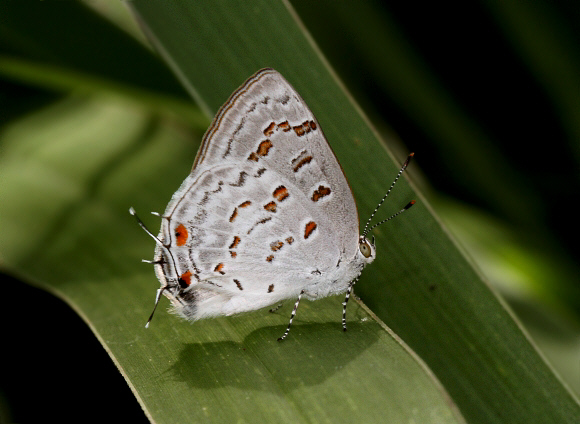
Introduction
Almost all neotropical Theclinae species are placed in the Eumaeini. The tribe is not particularly well represented in collections, so until fairly recently a high percentage remained unstudied, and were inappropriately filed away in the ‘convenience’ genus Thecla. Many taxonomists have attempted to rationalise the systematics of the Eumaeini, the most recent being Robbins who published a revision in 2004, reclassifying the taxa into 83 genera. Currently there are 1058 known species. Taking into account their small size, secretive behaviour, and the great similarities between many species, it is estimated that about another 200 species probably remain to be discovered.
The genus Ministrymon comprises of 23 known species, variously distributed from s.w. USA to Peru and Argentina. Males are dark brown on the upper surface of the wings, with a metallic blue sheen on the hindwings and around the basal area of the forewings. The ventral surfaced in most species is grey, with a broken staggered red streak on both wings. With the exceptions of cleon and azia all Ministrymon species also have additional black and/or red spots in the basal area of the hindwings, and a dark bar at the end of the discal cell of the forewings.
The genus name Ministrymon is derived from the Latin minimum – meaning ‘small’ or ‘smaller’, and from the name of the Greek river Strymon. It refers to the small size of the butterfly and the river-like ‘hairstreak’ line on the underside of many Eumaeini genera including Strymon, Hypostrymon, Phaeostrymon, Ministrymon, Chlorostrymon and Electrostrymon. In many species including such as cleon and una this streak is broken up to form a series of red spots.
Ministrymon una is distributed from Mexico to Venezuela and Brazil.
Habitats
This species is found in rainforest and humid deciduous forest, at elevations between about 100-800m.
Lifecycle
To be completed.
Adult behaviour
Both sexes can often be found settled on bushes or low herbage in forest edge habitats.
